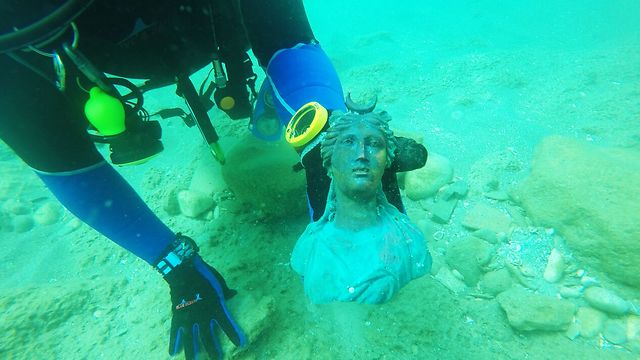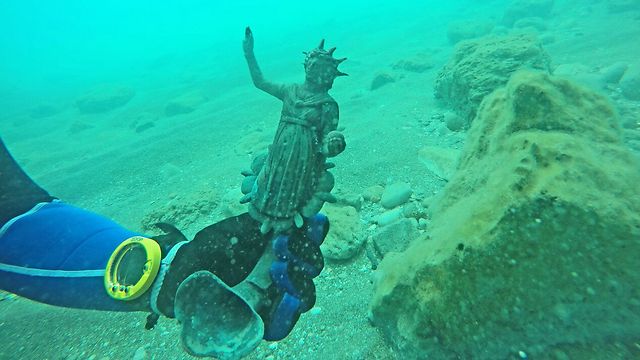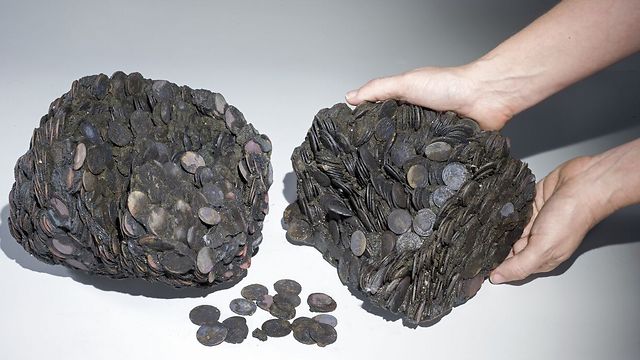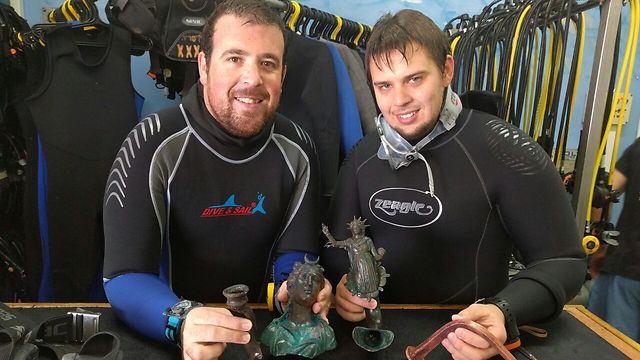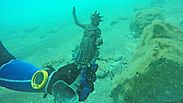
An accidental discovery by two divers in the port of Caesarea before the Passover holiday led to the discovery of a spectacular ancient marine cargo from a merchant ship that sank during the Late Roman period (400 CE).
Divers Ran Feinstein and Ofer Ra‘anan of Ra‘anana immediately contacted the Israel Antiquities Authority (IAA) and reported the discovery.
The IAA stated that a joint dive at the site together with its archaeologists revealed that an extensive portion of the seabed had been cleared of sand, uncovering the remains of a ship on the sea bottom: iron anchors, remains of wooden anchors and items that were used in the construction and running of the sailing vessel were all found. An underwater salvage survey conducted with the assistance of divers from the IAA and volunteers using advanced equipment discovered numerous other items that were part of the ship’s cargo.
Many of the artifacts, as described by the IAA, are bronze and in an extraordinary state of preservation: a bronze lamp depicting the image of the sun god Sol, a figurine of the moon goddess Luna, a lamp in the image of the head of an African slave, fragments of three life-size bronze cast statues, objects fashioned in the shape of animals such as a whale, a bronze faucet in the form of a wild boar with a swan on its head, etc.
In addition, fragments of large jars were found that were used for carrying drinking water for the crew of the ship and for transportation at sea. One of the biggest surprises in particular was the discovery of two metallic lumps composed of thousands of coins weighing approximately 45 lbs. The coins retained the form of the pottery vessel in which they were transported.
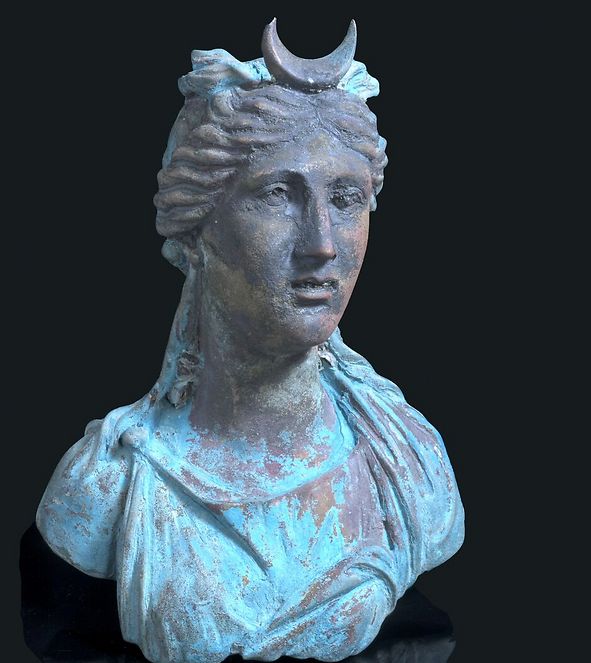
According to Jacob Sharvit, director of the Marine Archaeology Unit of the IAA, and Dror Planer, deputy director of the unit, “These are extremely exciting finds, which apart from their extraordinary beauty, are of historical significance. The location and distribution of the ancient finds on the seabed indicate that a large merchant ship was carrying a cargo of metal slated recycling, which apparently encountered a storm at the entrance to the harbor and drifted until it smashed into the seawall and the rocks”.
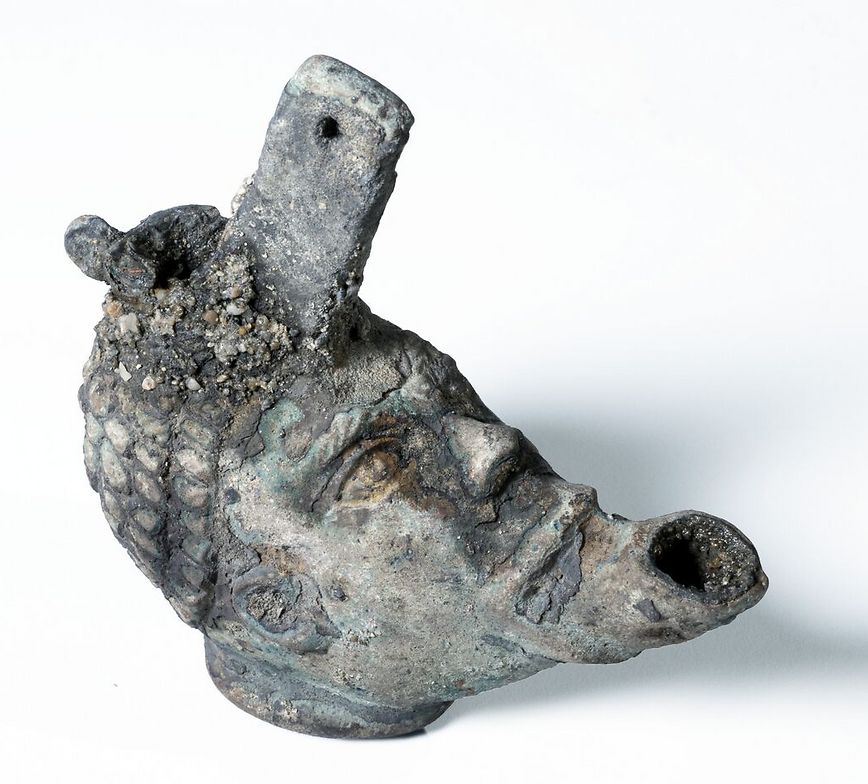
Sharvit and Planer explain that “an underwater find of this magnitude hasn't been found in Israel in the past thirty years. Metal statues are rare archaeological finds because they were always melted down and recycled in antiquity. When we find bronze artifacts it usually occurs at sea. Because these statues were wrecked together with the ship, they sank in the water and were thus ‘saved’ from the recycling process”.
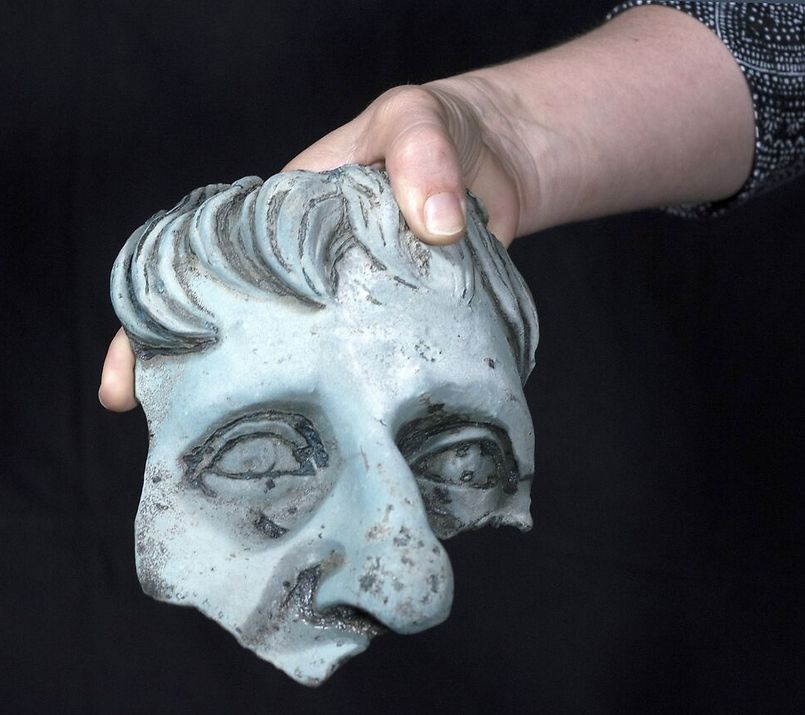
“In the many marine excavations carried out in Caesarea. only a very small number of bronze statues have been found, whereas in the current cargo, a wealth of spectacular statues were found that were in the city and were removed from it by way of sea. The sand protected the statues; consequently they are in an amazing state of preservation – as though they were cast yesterday rather than 1,600 years ago,” Sharvit and Planer added,
The coins that were discovered bear the image of the emperor Constantine who ruled the Western Roman Empire (312–324 CE) and was later known as Constantine the Great, ruler of the Roman Empire (324–337 CE), and of Licinius, an emperor who ruled the eastern part of the Roman Empire and was a rival of Constantine, until his downfall in a battle that was waged between the two rulers.
According Sharvit and Planer, "The range of finds recovered from the sea reflects the large volume of trade and the status of Caesarea’s harbor during this time, which was known as period of economic and commercial stability in the wake of the stability of the Roman Empire. The crew of the shipwreck lived in a fascinating time in history that greatly influenced humanity – the period when Christianity was on its way to becoming the official religion of the Roman Empire. It was at this time that Emperor Constantine put a halt to the policy of persecuting Christians, and the faithful in Caesarea, as well as elsewhere in the Roman Empire, were given the right to practice their belief through the famous Edict of Milan that proclaimed Christianity was no longer a banned religion.”
The director-general of the Caesarea Development Corporation, Mr. Michael Kersenti, notes that the recent discoveries highlight the uniqueness of Caesarea as an ancient port city with a rich historical and cultural heritage. He pointed out that the goal is to present as many of these cultural treasures as possible, those discovered as well as those to be discovered in the future, to the numerous visitors who come to Caesarea each year.















